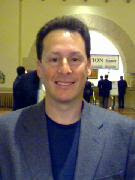A response to some comments from Robert Litterman at Goldman Sachs Asset Management about factor models not working any more...
While it’s true that factor models crashed in August 2007, many traditional managers had their problems as well. Why is this? Simplifying it for now, factor models predict stocks using either value or momentum, or a combination. Value factors pick out stocks that look cheap based on price, while momentum factors target stocks that have good trends. Traditional managers buy and hold under-valued stocks, but usually need some catalyst or story above and beyond price. Many of these stocks are the same as what the factor models target.
I do believe that the typical factor models and process may have run their course. These factors are known by every quantitative and fundamental manager. Backtesting factors can be done from a litany of financial websites. As for combining factors, there are two traditional ways this has been done. First, you simply equal-weight or arbitrarily assign a weight that feels right. Obviously this naive weighting scheme has many pitfalls. The second is a bit more mathematical in nature where you optimize the factor combination based on the history of the factor performance and covariance with the other factors. While this is a more sophisticated way out, it suffers from the assumption that the future will replicate the past. Since this never happens in real-time, this is a doomed solution as well.
So, how will factors models survive and thrive? I think the answer lies in two directions – factors and weights. There are many undiscovered and underutilized factors in the investment world. What didn’t work or exist five or ten years may be a good approach for the next year or two. Another group of underutilized investment ideas comes from nonlinear factors. Nonlinear factors are certainly less popular than traditional linear factors, partly due to the complexity in combining factors.
In terms of determining the weights going forward, a dynamic weighting scheme makes the most sense. Not only does the sophisticated investor (or machine) have all the information everyone else has, but they exploit it much faster than the factor model users. However, there is still plenty of information in the traditional factors in the short-term. While it is true that certain factors had a long history of success over the last century, those factors will not outperform in the future when looking at a long-term horizon of 1-3 years. For a month or two, many of these factors still show good returns, but then seem to stop working. The real skill and reward comes in knowing how to dynamically weight the factors.
Consequently, I am bullish on factor models that have unique factors, nonlinear information and are dynamically weighted.
Wednesday, December 2, 2009
Subscribe to:
Post Comments (Atom)

No comments:
Post a Comment